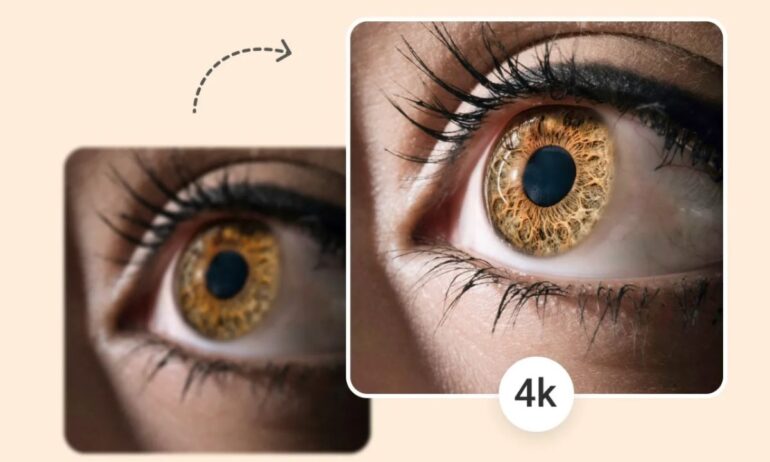Introduction
We’ve all been there—you take a perfect shot, but when you zoom in or try to print it in a larger format, it looks blurry and pixelated. Whether you’re a photographer, designer, marketer, or just someone who loves sharing high-quality visuals online, image quality matters more than you think. That’s where an image upscaler comes into play.
With the right upscaling tool, you can enlarge images without sacrificing clarity. In fact, AI-powered solutions today can enhance details, sharpen edges, and breathe new life into old or low-resolution pictures. In this article, we’ll explore how image upscalers work, why they’re useful, and how you can get the most out of them in real-world scenarios.
What Is an Image Upscaler?
An image upscaler is a tool designed to increase the size (resolution) of an image while minimizing loss of quality. Unlike traditional resizing methods that simply stretch pixels, modern AI-based upscalers analyze patterns, textures, and details in the original image and then recreate them intelligently in the larger version.
For example, if you have a 500×500 pixel image and want to print it on a large poster, a normal resize would make it blurry. An AI image upscaler, on the other hand, can turn it into a sharp 2000×2000 pixel version that still looks professional.
Why Do You Need an Image Upscaler?
1. Better Prints and Marketing Materials
Designers and marketers often need to use the same image across different platforms—social media, websites, banners, and print. A high-resolution upscaled version ensures your visuals look professional everywhere.
2. Restoring Old Photos
Got an old family picture scanned at low quality? With an upscaler, you can bring back the details and make it frame-worthy again.
3. E-commerce and Product Listings
Online shoppers judge products based on images. If your photos look fuzzy, you might lose potential buyers. Upscaling helps maintain crisp, clear visuals that increase trust.
4. Social Media Sharing
Platforms like Instagram and Pinterest thrive on aesthetic visuals. With upscaled images, your content can stand out in a sea of average-quality uploads.
How AI-Powered Image Upscalers Work
Unlike manual editing, AI tools rely on deep learning algorithms. They are trained on millions of images, allowing them to recognize patterns and fill in missing details intelligently.
For instance:
- They can sharpen blurry text in a screenshot.
- They can add realistic hair strands in a portrait.
- They can enhance textures in fabrics, landscapes, or buildings.
This goes beyond simple pixel duplication—it’s like giving your photo a makeover without changing its original charm.
Real-World Applications of Image Upscaling
Graphic Design and Branding
Designers often deal with logos and artwork that clients provide in low resolution. Instead of redrawing everything, an upscaler can quickly make the file usable for websites, flyers, or billboards.
Photography and Portraits
Photographers sometimes need to crop images tightly, but this reduces resolution. Upscalers restore the lost quality, ensuring the final product remains print-ready.
Online Stores
E-commerce sellers often struggle with product photos sourced from suppliers. Upscaling these images can make your store look more polished and trustworthy.
Content Creation
From YouTubers to bloggers, everyone needs crisp visuals to stand out. Upscaling can turn average-looking thumbnails or illustrations into eye-catching assets.
Tips for Using an Image Upscaler Effectively
1. Start with the Best Quality You Have
Even though AI upscalers are powerful, they work best when the original photo isn’t too distorted. Always begin with the highest-quality version available.
2. Combine With Other Editing Tools
Sometimes, you don’t just want a bigger image—you want a cleaner one too. For example, if an unwanted person appears in your shot, you can use a tool like remove people from photos before upscaling. This way, you get both clarity and a distraction-free final image.
3. Don’t Overdo the Enlargement
Upscaling an image from 200×200 pixels to a giant poster may not look natural. Stick to moderate enlargements (2x or 4x) for the most realistic results.
4. Use for Web Optimization
Upscaling isn’t just for prints. High-resolution images load better on retina displays and give your website a more premium feel.
Comparing Free vs. Paid Image Upscalers
- Free Tools: Great for quick fixes or casual use. They often have limits on image size or batch processing.
- Paid Tools: Offer higher processing power, advanced AI models, and bulk editing features—ideal for professionals.
For businesses and creatives, investing in a premium solution pays off in the long run by saving time and producing consistent results.
Common Mistakes to Avoid
- Upscaling Already Blurry Images: The AI can’t magically invent details from nothing. Always ensure your source file has some clarity.
- Ignoring File Format: Use PNG or TIFF for images you plan to upscale. JPEGs may show compression artifacts more prominently.
- Over-Enhancement: Sometimes, too much sharpening can make photos look unnatural. Strike a balance.
The Future of Image Upscaling
Technology is evolving fast. With machine learning becoming more advanced, we’ll soon see tools that not only upscale but also recolor, denoise, and restore photos automatically. Imagine scanning an old black-and-white family portrait and instantly getting a high-resolution, colorized version!
For businesses, this means less reliance on professional photo shoots and more flexibility in reusing existing content. For individuals, it means preserving memories and making them share-worthy in the digital age.
Conclusion
Image upscaling has come a long way from basic pixel stretching. Today’s AI-driven tools can intelligently enhance details, making your photos look sharper, cleaner, and more professional. Whether you’re a photographer restoring old memories, a designer working on branding, or an online seller boosting product listings, an image upscaler can make all the difference.
And if you want to take things a step further, don’t just upscale—polish your images by removing distractions with tools like remove people from photos. When combined, these solutions give you complete control over how your visuals look, ensuring they’re always ready to impress.
So, next time you come across a photo that’s too small, pixelated, or outdated, don’t delete it. Upscale it, enhance it, and give it the second life it deserves.
ALSO READ: How to Animate a Picture with AI Video Effects: A Step-by-Step Guide






